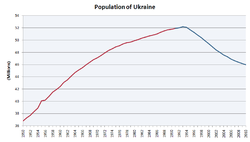This blog is being created as an assignment for my Geography 102 class at the University of New Mexico, located in Albuquerque, New Mexico.
The Place I have chosen is Kiev in the Ukraine. My brother’s girlfriend Yulia is from this area and I always have wondered what it is like. Additionally, one of my favorite musical pieces is the “Great Gate at Kiev” by Mussorgsky, and I always wondered about why the Piece was composed.
The Place I have chosen is Kiev in the Ukraine. My brother’s girlfriend Yulia is from this area and I always have wondered what it is like. Additionally, one of my favorite musical pieces is the “Great Gate at Kiev” by Mussorgsky, and I always wondered about why the Piece was composed.
The area looks to be very densely populated, but that is to be expected since it is A very old city, first founded as a trading center on the Dnieper River around 500 CE The city is the Capital of the Ukraine and has been the capital for several other cultures and empires, including the Kievan Rus who were Viking Traders from Scandinavia.
The first thing I notice about the area when looking at the satellite image was how green it is and how much it looks like Northern Wisconsin, an area I am familiar with. Both areas are located in the Cold Mid latitude Humid Continental climate type, and they look very much alike, both from the satellite photos, and from ground level photos. From a high altitude view, the area is obviously covered with large areas of forest, along with the familiar pattern of farmer’s fields. The area is dominated by the Dnieper River, one of the major rivers of Eastern Europe. Looking at some of the Panorimo photos along the river reminds me very much of the northern Mississippi river between Wisconsin and Minnesota.
The most striking examples of human modification on the area would be the Kiev Hydroelectric dam built North of the old city by the Soviets in 1960 to create the Kyivske Reservoir. Additionally, in this same area are large “urban development” areas that are strangely regular. On closer look they are very large areas of high density apartment units. My friend Yulia says that they were built by the Soviets after World War II, and that they are still occupied since the people in the area have no other options. In looking at the Panorimo pictures, one can see that while the areas are beautifully landscaped, the buildings appear to be all the same.


=============================================================================
However, in looking at photos from other sources, one can many photographs of the Old City, and can see that it was a cultured and prosperous area for many centuries.
.jpg)
.jpg)
.jpg)

.jpg)
